G-Sync vs FreeSync: The Best Variable Refresh Rate Solution?
When information technology comes to gaming, at that place is nothing that beats the PC Master Race. Allow me to explicate. The level of customizability, every bit well as the raw ability that a perfectly designed custom gaming rig can achieve, is something consoles can just dream of. That being said, even PC gaming is prone to sure loopholes and these loopholes can ruin one's gaming experience. If you're an ardent gamer or someone that keeps a keen eye on gaming forums, surely you must have heard about one the major troubles for any gamer – screen violent. While there is a traditional solution to information technology in the form of V-Sync, newer technologies accept brought on other solutions in the form of NVIDIA's Thou-Sync and AMD's FreeSync. Today, we'll pit these two One thousand-Sync vs FreeSync to come across which one comes out on top. But first, let us throw some light on what the exactly the problem here is.
What is Screen Tearing?
If you lot've been gaming on a rig that doesn't have a very powerful monitor, surely y'all must have run into this annoying phenomenon that's screen tearing. Screen tearing is an effect that occurs on a video source where 2 or more frames of video are shown together in a single frame causing a torn effect. You come across, as the GPUs become more and more than powerful, they'll want to button as many frames every bit they can in the shortest span. While this sounds great, if your monitor's refresh charge per unit is fixed at say 75Hz, even if the multiple frames for an animation are pushed, your monitor won't exist set up for it.
For instance, consider you're playing a game on a GPU that is able to push 100 frames per second. That ways that the monitor is updating itself 75 times per second, but the video bill of fare is updating the display 100 times per 2d which is 33% faster than the monitor. What happens is that in the time betwixt screen updates, the video card has drawn 1 frame and a third of another one. That third of the next frame will overwrite the top third of the previous frame and then go drawn on the screen. The video carte then finishes the concluding two thirds of that frame, and renders the next 2 thirds of the next frame and then the screen updates again.

You will only meet a portion of what's happening: a part of the current frame and a office of the adjacent frame(due south). Every bit a event, it looks every bit if the film on your screen is separate into multiple parts, thus disrupting the entire look of the game. Another reason that this might be taking identify is when the GPU of the system is nether pressure from large amounts of graphical processing or poor programming. When the GPU is nether a lot of force per unit area, information technology will fail to go on the output video in sync causing the screen to tear.
Five-Sync and The Need For An Alternative
For any gamer, screen tearing is an abrasive occurrence. A perfectly-rendered championship tin can totally exist ruined by gross horizontal lines and frame stuttering. Developers before long realized this problem and brought out 5-Sync. Vertical Sync or V-Sync aims to solve the screen trigger-happy issue with the help of double-buffering.
Double-buffering is a technique that mitigates the tearing trouble by providing the system with a frame buffer and a back buffer. Whenever the monitor grabs a frame to refresh with, it pulls information technology from the frame buffer. The video carte du jour draws new frames in the dorsum buffer, so copies it to the frame buffer when it's done. As per V-Sync's predefined rules, the back buffer can't copy to the frame buffer until right after the monitor refreshes. The back buffer is filled with a frame, the organisation waits, and after the refresh, the dorsum buffer is copied to the frame buffer and a new frame is fatigued in the back buffer, finer capping your framerate at the refresh rate.
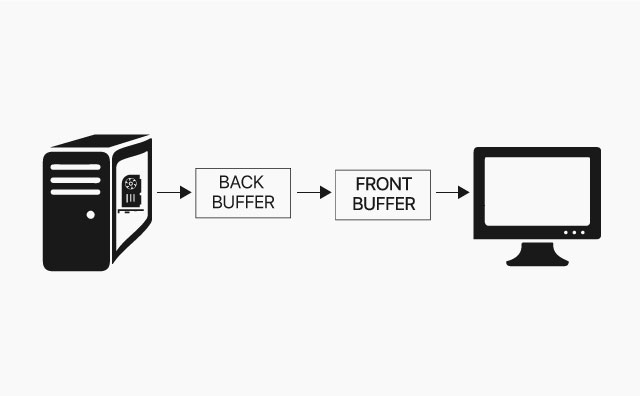
While all this does sound good and helps in removing screen tearing, V-Sync comes with its ain set of drawbacks. In V-Sync, your frame rate can only be equal to a discrete set of values equal to (Refresh / N),where N is some positive integer. For example, if your monitor'southward refresh rate is 60Hz, the frame rates that your system will piece of work in will be 60, 30, 20, 15, 12 and so on. As you can see, the driblet from threescore fps to 30 fps is a big one. Likewise, using V-Sync, any frame charge per unit between 60 and 30 that your system could probably button would be dropped downwardly to 30 only.
Furthermore, the biggest trouble with V-Sync is the input lag. As mentioned above, in the example of V-Sync, the frames that the GPU wants to button volition first exist held in the back buffer and volition be sent to the frame buffer merely when the monitor gives admission to it. This ways whatever input you requite to the arrangement will likewise get stored in that back buffer along with the other frames. But when these frames will get written to the main frame, volition your input exist shown. As such, systems tin suffer input lags of upward to 30 ms, which can actually disrupt your gaming feel.
The Alternatives: G-Sync and FreeSync
Yous see, be it traditionally or be it with the help of Five-Sync, information technology has ever been the monitor that has caused the issues. The main ability has always been given to the monitors, and they've misused it to limit the frames being pushed to them. No matter how many software level changes you brand, the hardware will e'er have its limits. Simply what if there was a unlike solution, something that made the GPUs become the supreme ability? Cue – Variable Refresh Rate Monitors.
As the proper name suggests, variable refresh rate monitors are display monitors with refresh rate cap value, but without a fixed refresh rate. Instead, they rely on the GPU front to alter their refresh rate. Now, this feat is accomplished with the help of either of the two technologies – NVIDIA G-Sync or AMD FreeSync.

Launched back in 2013, NVIDIA's K-Sync aims to solve the problem by giving the GPU the ultimate right in deciding how many frames will be pushed onto the screen. The monitor, rather than having a fixed refresh rate, adapts to the GPU'due south processing speed and match the outputted fps rate. So, for example, you're playing a game at 120 fps, then your monitor will besides be refreshing at 120 Hz (120 times per second). And in the case of loftier graphical processing requirement, where your GPU drops the frames to 30fps, the monitor will appropriately change its refresh rate to thirty Hz. As such, there is no loss in the frames, and the data is being directly pushed to the display, thus eradicating any scope for fierce or input lag.
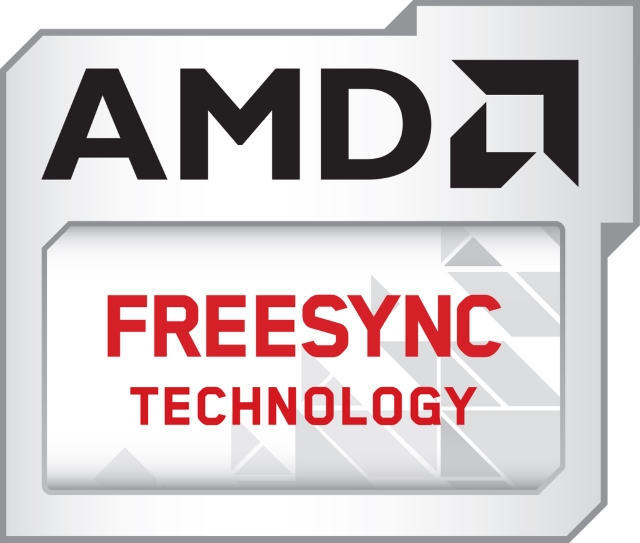
Now, while NVIDIA is the rex when it comes to gaming, its biggest competitor AMD is not that behind. And so when NVIDIA brought out M-Sync, how could AMD stay behind? To stay in the competition, AMD brought out their solution to V-Sync applied science – FreeSync. Brought out in 2015, AMD's FreeSync works on the same principle every bit NVIDIA's Yard-Sync by allowing the GPU to be the master, and command the refresh charge per unit of the monitor. While the aim of the both G-Sync and FreeSync is the same, the divergence betwixt the two lies in how they get about achieving information technology.
Yard-Sync vs FreeSync: How They Work?
NVIDIA designed the G-Sync to fix problems on both the ends. G-Sync is a proprietary adaptive sync technology, which means that information technology makes use of extra hardware module. This additional chip is congenital into every supported monitor, and information technology allows NVIDIA to fine-melody the experience based on its characteristics like maximum refresh rate, IPS or TN screens, and voltage. Even when your frame rate gets super low or super high, M-Sync can keep your game looking smooth.
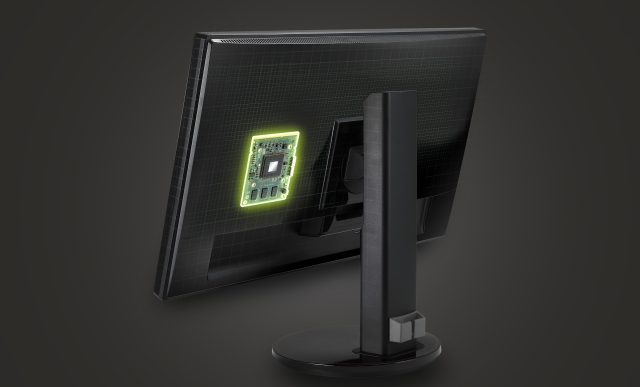
As for AMD's FreeSync, no such module is required. In 2015, VESA announced Adaptive-Sync equally an ingredient component of the DisplayPort 1.2a specification. FreeSync makes use of the DisplayPort Adaptive-Sync protocols to allow the GPU to take control of the refresh rates. Furthermore, it afterwards on expanded its support to HDMI ports likewise, making it highly-seasoned to a higher number of consumers.
Ghosting
In the aspect of displays, ghosting is used to describe an artifact acquired by a slow response time. Every bit the screen refreshes, the human center nevertheless perceives the image previously displayed; causing a smearing or blurring visual effect. The response time is a measure out of how fast a given pixel tin can change land from i color to some other colour. If your brandish'due south response fourth dimension is not in sync with the frames that the GPU is pushing, you are well-nigh likely to experience ghosting. This effect is prominent amongst nigh LCD or flat-screen panels. While it's not essentially screen tearing, ghosting is not far away from the concept, considering the fact that new frames are overlayed on the previous frames without them completely disappearing from the screen.

Since NVIDIA's G-Sync module operates with the help of an addition hardware module, it allows the Yard-Sync to foreclose ghosting past customizing the style the module operates on each and every monitor. With AMD'due south FreeSync, these adjustments are made within the Radeon driver itself, taking the job abroad from the monitor. As you can see, it is a hardware vs. software command module here, and NVIDIA easily wins here. While ghosting isn't common on FreeSync monitors, it is still there. On the other hand, since each monitor is physically tweaked and tuned, the G-Sync experiences no ghosting on its panels.
Flexibility
In the pursuit to solve screen vehement, the solution has been to give ultimate control to the GPU. But as Uncle Ben once said, "With corking power comes great responsibility". In this instance, the GPU takes away all the powers from the monitor, more or less. For case, you must be aware of the fact that most monitors, aside from normal effulgence and contrast adjustments, besides come with their own functions which allow the display to dynamically adjust the settings based on the input beingness supplied to them.
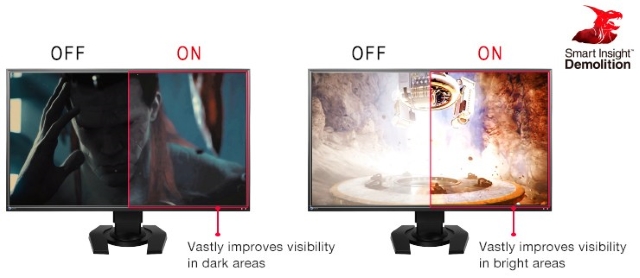
Since NVIDIA'due south G-Sync makes utilise of an extra proprietary module, it takes away this role from the display screen, by giving the ability of dynamic adjustments to the GPU. On the other mitt, AMD's FreeSync makes no such changes and enables the screen to have a dynamic color adjustment feature of its own. Having your personal modifications every bit an option is important for any manufacturer, as it helps them get the edge over other manufacturers. That is why many manufacturers prefer opting for FreeSync over One thousand-Sync.
Yard-Sync vs FreeSync: Uniform Devices
For whatsoever device to be compatible with NVIDIA's One thousand-Sync module, it must embed NVIDIA's proprietary module chip inside their displays. On the other manus, AMD'due south FreeSync can be utilized past any monitor that has a variable refresh rate and either a DisplayPort or HDMI port.
That being said, your GPU as well needs to be compatible with their corresponding technologies (yeah, y'all cannot mix and match the GPU of one manufacturer with the sync technique of the other). Having been introduced almost 2 years earlier than its competitor, the NVIDIA 1000-Sync has rather a lot of GPUs nether the supported tag for G-Sync. All the mid to high-finish GPUs from the 600 to the k series, carry the marking of the Grand-Sync on them.
Comparatively, at the fourth dimension of this writing, AMD supports only 9 GPUswhich make use of the FreeSync technology, equally compared to NVIDIA'southward 33. Furthermore, NVIDIA has as well extended its G-Sync back up to laptops and notebooks as well, a feature currently missing from AMD'southward FreeSync.
-
NVIDIA G-Sync Uniform Devices
| GTX 600 Serial | GTX 700 Series | GTX 900 Series | GTX 1000 Series | Titan Series |
|---|---|---|---|---|
| GeForce GTX 650 Ti Heave | GeForce GTX 745 | GeForce GTX 950 | GeForce GTX 1050 | GeForce GTX Titan |
| GeForce GTX 660 | GeForce GTX 750 | GeForce GTX 960 | GeForce GTX 1050 Ti | GeForce GTX Titan Black |
| GeForce GTX 660 Ti | GeForce GTX 750 Ti | GeForce GTX 965M | GeForce GTX 1060 | GeForce GTX Titan 10 |
| GeForce GTX 670 | GeForce GTX 760 | GeForce GTX 970 | GeForce GTX 1070 | GeForce GTX Titan Xp |
| GeForce GTX 680 | GeForce GTX 770 | GeForce GTX 970M | GeForce GTX 1080 | GeForce GTX Titan Z |
| GeForce GTX 690 | GeForce GTX 780 | GeForce GTX 980 | GeForce GTX 1080 Ti | |
| GeForce GTX 780 Ti | GeForce GTX 980M | |||
| GeForce GTX 980 Ti |
-
AMD FreeSync Uniform Devices
| GPUs | APUs |
|---|---|
| Radeon R7 260X | Kaveri |
| Radeon R7 360 | Kabini |
| Radeon R9 285 | Temash |
| Radeon R9 290 | Beema |
| Radeon R9 290X | Mullins |
| Radeon R9 380 | Carrizo |
| Radeon R9 390 | Bristol Ridge |
| Radeon R9 390X | Raven Ridge |
| Radeon R9 Fury Ten |
Design Cost and Availability
NVIDIA's K-Sync makes utilise of an actress hardware proprietary, which basically means that display makers are required to make more room inside the monitor enclosure. While that may not seem like a big deal, creating a custom product pattern for ane type of monitor raises evolution costs considerably. On the other mitt, AMD'due south approach is much more open up, in which brandish makers tin include the technology in their existing designs.
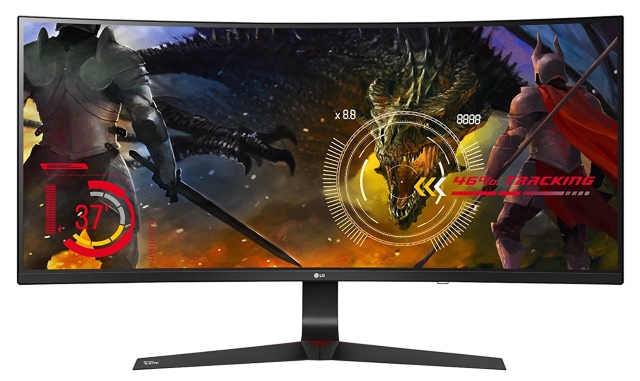
To testify you a bigger picture (no pun intended), LG'due south 34-inch Ultrawide monitor with FreeSync support will only cost you $397. Whereas, one of the cheapest ultrawide monitors currently bachelor, the LG's 34-inch alternative with Chiliad-Sync support will set up you back at $997. That's almost a $600 divergence, which can easily be a deciding gene while making your next purchase.
Meet Also: 4K vs UHD: What'south The Difference and How Information technology Affects You?
G-Sync vs FreeSync: The Best Variable Refresh Rate Solution?
Both NVIDIA G-Sync and AMD FreeSync successfully eradicate the problem of screen tearing. While the G-Sync technology is definitely more expensive, it is supported on a wider range of GPUs and it offers zero ghosting likewise. AMD'southward FreeSync on the other end is aimed at providing a cheaper alternative, and while the number of monitors that support it is quite high, not many mainstream GPUs are supported, as of now. Ultimately, the option is in your hands, though you couldn't go incorrect with either of the two. Tell u.s. almost any other queries that you may take in the comments section beneath, and we'll try our all-time to aid you lot out.
Source: https://beebom.com/g-sync-vs-freesync/
Posted by: bassettween1967.blogspot.com


0 Response to "G-Sync vs FreeSync: The Best Variable Refresh Rate Solution?"
Post a Comment